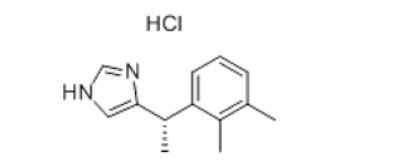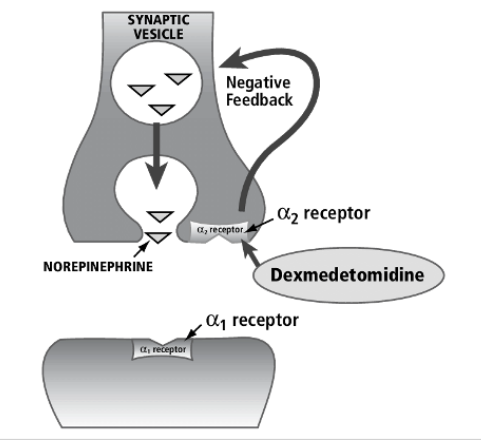Knowde Enhanced TDS
Identification & Functionality
- Chemical Name
- Pharma & Nutraceuticals Functions
- CAS No.
- 145108-58-3
- EC No.
- 682-047-2
- Technologies
- Product Families
- Chemical Structure

Applications & Uses
- Markets
- Used as Sedative
Application:
Since the first approval was acquired in the US in 1999, dexmedetomidine hydrochloride has been widely used in sedation. Dexmedetomidine hydrochloride is notable for its ability to provide sedation without risk of respiratory depression (unlike other commonly used drugs such as propofol and fentanyl) and can provide cooperative or semi-rousable sedation.
Intensive Care Sedation:
Dexmedetomidine hydrochloride can be used as a sedative (calming agent) if adults need to be calm or sleepy in the Intensive Care Unit whilst they are being ventilated (on a breathing machine). It may be given as an infusion up to 24 hours.
Procedural Sedation:
Dexmedetomidine hydrochloride can be given to adults prior to an operation if they are not on a ventilator (breathing machine) if it is required for the procedure or surgery that they be sleepy and calm.
Mechanism of action:
Dexmedetomidine hydrochloride selectively binds to and activates presynaptic alpha-2 adrenoceptors located in the brain, thereby inhibiting the release of norepinephrine from synaptic vesicles. This leads to an inhibition of postsynaptic activation of adrenoceptors, which inhibits sympathetic activity, thereby leading to analgesia, sedation and anxiolysis. Physiology of the α 2-adrenoceptor agonists receptor is showed in figure.

Properties
Safety & Health
- Side Effects
Treatment-emergent adverse reactions occurring at an incidence of >2% are provided in Table. The most frequent adverse reactions were hypotension, bradycardia and dry mouth.
Adverse Event All Dexmedetomidine
Injection(N = 1007) (%)Randomized Dexmedetomidine
Injection (N = 798) (%)Placebo
(N = 400) (%)Propofol
(N = 188) (%)Hypotension 25% 24% 12% 13% Hypertension 12% 13% 19% 4% Nausea 9% 9% 9% 11% Bradycardia 5% 5% 3% 0 Atrial Fibrillation 4% 5% 3% 7% Pyrexia 4% 4% 4% 4% Dry Mouth 4% 3% 1% 1% Vomiting 3% 3% 5% 3% Hypovolemia 3% 3% 2% 5% Atelectasis 3% 3% 3% 6% Pleural Effusion 2% 2% 1% 6% Agitation 2% 2% 3% 1% Tachycardia 2% 2% 4% 1% Anemia 2% 2% 2% 2% Hyperthermia 2% 2% 3% 0 Chills 2% 2% 3% 2% Hyperglycemia 2% 2% 2% 3% Hypoxia 2% 2% 2% 3% Post-procedural Hemorrhage 2% 2% 3% 4% Alfa Chemistry offers high quality of dexmedetomidine hydrochloride which meets the CP & EP.

